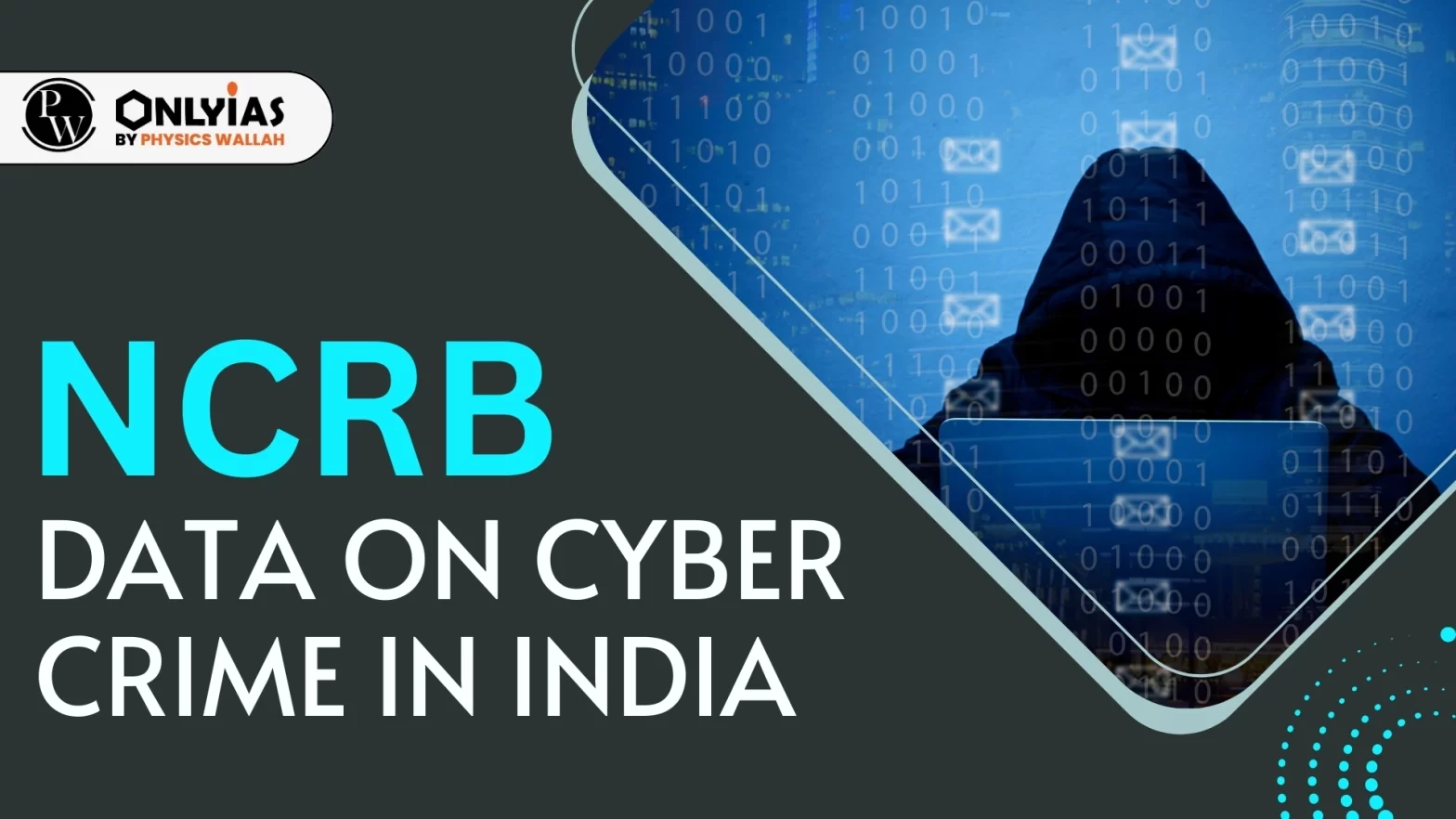Context: This article is based on an Editorial “Cyber crime growing at the rate 15-20% annually in India: West Bengal IGP Cyber Cell” which was published in the Economic Times. Cyber Crime in India; Country witnessed a rise of 24% in cyber crimes registered in 2022 compared to 2021, as per the latest data released by the National Crime Records Bureau (NCRB).
Enroll now for UPSC Online Course
Cyber Crime: Definition & Examples
- Definition: Any unlawful act where a computer or communication device or computer network is used to commit or facilitate the commission of crime.
- Examples: Hacking, identity theft, fraud, and Cyberstalking.
- Cybercrimes comes as a State subject as per the Seventh Schedule of the Indian Constitution.
What are the primary factors contributing to the rise of cyber Crime in India?
- Financial gain: Through stealing financial information, such as credit card numbers and bank accounts, or through demanding ransom in exchange for stolen data or resources.
- Espionage: Some cyber criminals engage in cyber crime to steal confidential or proprietary information for competitive advantage or to damage the reputation of an organization.
- Political or Ideological Motives: As some cyber criminals want to promote a particular cause or to advance a particular agenda.
What are the challenges linked to Cyber Crime in India?
- Increase of Attacks with Advancement in Technologies: As new technologies such as Internet of Things and cloud computing become more prevalent, the cyberattacks are also expanding.
- Sophisticated Cyber Attacks: Cybercriminals are becoming increasingly sophisticated, using advanced techniques such as ransomware, zero-day exploits, and social engineering to target individuals and organizations.
- Cyber Warfare and State-sponsored Attacks: India faces the threat of cyber espionage and state-sponsored cyber attacks increasing vulnerability of critical infrastructure and sensitive government information.
- Lack of Cybersecurity Awareness: Many individuals and businesses in India may not be fully aware of the risks and preventive measures associated with cybersecurity which makes them more susceptible to falling victim to cybercrimes.
- Inadequate Legal Framework: Although India has made efforts in establishing legal frameworks to address cybercrimes, there may still be gaps and challenges in effectively enforcing laws.
Also Read: What is Deepfake Technology? – Its Types, Impacts, and Security Countermeasures
Government Measures Associated with Cybercrime in India
Cyber Crime in India: Government Initiatives
- National Cyber Forensic Laboratory (Investigation): To provide early stage cyber forensic assistance to Investigating Officers (IOs) of all State/UT Police by both online and offline modes.
- ‘CyTrain’ portal: Massive Open Online Courses (MOOC) platform for capacity building of all the stakeholders through online courses on critical aspects of cyber crime.
- National Cyber Security Policy (NCSP): For a secure and strong cyberspace environment.
- Indian Cyber Crime Coordination Centre (I4C): To enhance the capabilities of law enforcement agencies to prevent and investigate cybercrimes.
- National Cyber Crime Reporting Portal: To enable the public to report incidents pertaining to all types of cyber crimes, with special focus on cyber crimes against women and children.
- National Critical Information Infrastructure Protection Centre (NCIIPC): For protecting critical information infrastructure from cyber threats.
- Cyber Swachhta Kendra: For the detection and removal of malware-infected systems.
- Computer Emergency Response Team (CERT-In): The national agency responsible for responding to and mitigating cybersecurity incidents. It issues alerts and advisories to the public and private sectors to enhance cybersecurity awareness.
- Information Technology (IT) Act, 2000: It is a comprehensive legislation to address various types of cybercrimes.
Way Forward to deal with Cyber Crime in India
- Implement Advanced Cybersecurity Framework: Investing in advanced cybersecurity technologies can help to protect critical information systems and networks.
- Cyber Hygiene Practices: There is a need to adopt good cyber hygiene practices, such as regular software updates, strong password management, and secure online behavior.
- Strengthening of Collaborations: Strengthen collaboration with international organizations, law enforcement agencies, and other countries to share threat intelligence, best practices, and coordinate efforts in investigating and prosecuting cross-border cybercrimes.
- Public Awareness and Education: Conduct widespread awareness campaigns to educate the public about common cyber threats, safe online practices, and the importance of cybersecurity.
- Encourage Adoption of Cyber Insurance: To cover the financial losses that result from cyber events and incidents.
- Cyber-risk coverage also helps with the costs associated with remediation, including payment for legal assistance, investigators, crisis communicators and customer credits or refunds.
Enroll now for UPSC Online Classes
Conclusion:
Addressing the rising threat of cyber crime in India requires a multi-faceted approach, involving advanced cybersecurity measures, public awareness, international collaboration, and a robust legal framework to safeguard individuals, businesses, and the nation’s digital infrastructure.
![]() 20 Dec 2023
20 Dec 2023

